2-Chlorobenzotrifluoride
Synonym(s):1-Chloro-2-(trifluoromethyl)benzene;2-Chloro-α,α,α-trifluorotoluene
- CAS NO.:88-16-4
- Empirical Formula: C7H4ClF3
- Molecular Weight: 180.55
- MDL number: MFCD00000561
- EINECS: 201-805-1
- SAFETY DATA SHEET (SDS)
- Update Date: 2025-09-25 17:15:13

What is 2-Chlorobenzotrifluoride?
Chemical properties
Clear colourless to light yellow liquid
The Uses of 2-Chlorobenzotrifluoride
Dye intermediate, chemical intermediate, solvent, and dielectric fluid.
Purification Methods
Dry the trifluoride over CaSO4, and distil it at high reflux ratio through a silvered vacuum-jacketed glass column packed with one-eight inch glass helices [Potter & Saylor J Am Chem Soc 73 90 1951]. [Beilstein 5 H 302, 5 III 692, 5 IV 814.]
Properties of 2-Chlorobenzotrifluoride
| Melting point: | -7.4 °C |
| Boiling point: | 152 °C(lit.) |
| Density | 1.379 g/mL at 25 °C(lit.) |
| refractive index | n |
| Flash point: | 138 °F |
| storage temp. | Flammables area |
| form | clear liquid |
| color | Colorless to Light yellow |
| Specific Gravity | 1.379 |
| explosive limit | 1.7%(V) |
| Water Solubility | <0.1 g/100 mL at 19.5 ºC |
| BRN | 510993 |
| Exposure limits | ACGIH: TWA 2.5 mg/m3 NIOSH: IDLH 250 mg/m3 |
| Stability: | Stable. Flammable. Incompatible with strong oxidizing agents, strong bases. |
| CAS DataBase Reference | 88-16-4(CAS DataBase Reference) |
| NIST Chemistry Reference | Benzene, 1-chloro-2-(trifluoromethyl)-(88-16-4) |
| EPA Substance Registry System | 2-Chlorobenzotrifluoride (88-16-4) |
Safety information for 2-Chlorobenzotrifluoride
| Signal word | Warning |
| Pictogram(s) |
 Flame Flammables GHS02  Exclamation Mark Irritant GHS07 |
| GHS Hazard Statements |
H226:Flammable liquids H302:Acute toxicity,oral H315:Skin corrosion/irritation H319:Serious eye damage/eye irritation H335:Specific target organ toxicity, single exposure;Respiratory tract irritation H412:Hazardous to the aquatic environment, long-term hazard |
| Precautionary Statement Codes |
P210:Keep away from heat/sparks/open flames/hot surfaces. — No smoking. P233:Keep container tightly closed. P273:Avoid release to the environment. P301+P312:IF SWALLOWED: call a POISON CENTER or doctor/physician IF you feel unwell. P303+P361+P353:IF ON SKIN (or hair): Remove/Take off Immediately all contaminated clothing. Rinse SKIN with water/shower. P305+P351+P338:IF IN EYES: Rinse cautiously with water for several minutes. Remove contact lenses, if present and easy to do. Continuerinsing. |
Computed Descriptors for 2-Chlorobenzotrifluoride
2-Chlorobenzotrifluoride manufacturer
New Products
Indole Methyl Resin tert-butyl 9-methoxy-3-azaspiro[5.5]undecane-3-carboxylate Boc-His(Boc)-OH 2-CTC Resin 4-Chloro-7-tosy1-7Hpyrrolo[2,3-d]pyrimidine 5,7-Dibromo-1H-indole 2,5-dichloro-N-hydroxy-4,6-dimethylpyridine-3-carboximidamide 2,2-Dimethoxy-7-azaspiro[3.5]nonane hydrochloride 4-chloromethyl-5-methyl-1,3-dioxol-2-one (DMDO-Cl) R-2-BENZYLOXY PROPIONIC ACID 1,1’-CARBONYLDIIMIDAZOLE 1,1’-CARBONYLDI (1,2-4 TRIAZOLE) N-METHYL INDAZOLE-3-CARBOXYLIC ACID 4-((2-hydroxyethyl)thio)benzoic acid 1-(TERT-BUTOXYCARBONYL)-2-PYRROLIDINONE Methyl 6-methylnicotinate 3-Pyridineacrylic acid tert-Butyl carbazate TETRAHYDRO-2H-PYRAN-3-OL 2-((4-morpholinophenylamino) (methylthio) methylene) malononitrile 3-(4-morpholinophenylamino)-5-amino-1H-pyrazole-4-carbonitrile 2,4-dihydroxybenzaldehyde 1,3-Diethyl-1,3-Diphenylurea Methyl 2-methylquinoline-6-carboxylateRelated products of tetrahydrofuran
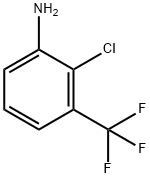
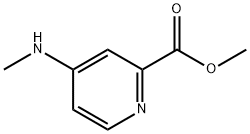
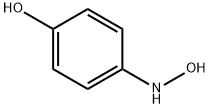

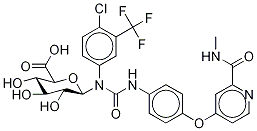
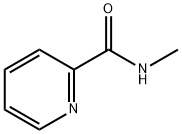

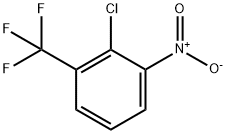
You may like
-
 2-Chlorobenzotrifluoride CAS 88-16-4View Details
2-Chlorobenzotrifluoride CAS 88-16-4View Details
88-16-4 -
 2-Chlorobenzotrifluoride CAS 88-16-4View Details
2-Chlorobenzotrifluoride CAS 88-16-4View Details
88-16-4 -
 88-16-4 98%View Details
88-16-4 98%View Details
88-16-4 -
 Pyridine 99.5% HPLC /UV SpectroscopyView Details
Pyridine 99.5% HPLC /UV SpectroscopyView Details
110-86-1 -
 Piperazine Spot supply, best priceView Details
Piperazine Spot supply, best priceView Details
110-85-0 -
 Dibutyl PhthalateView Details
Dibutyl PhthalateView Details
84-74-2 -
 Imidazole Spot supply, competitive priceView Details
Imidazole Spot supply, competitive priceView Details
288-32-4 -
 Thiourea 99% ARView Details
Thiourea 99% ARView Details
62-56-6
Statement: All products displayed on this website are only used for non medical purposes such as industrial applications or scientific research, and cannot be used for clinical diagnosis or treatment of humans or animals. They are not medicinal or edible.
